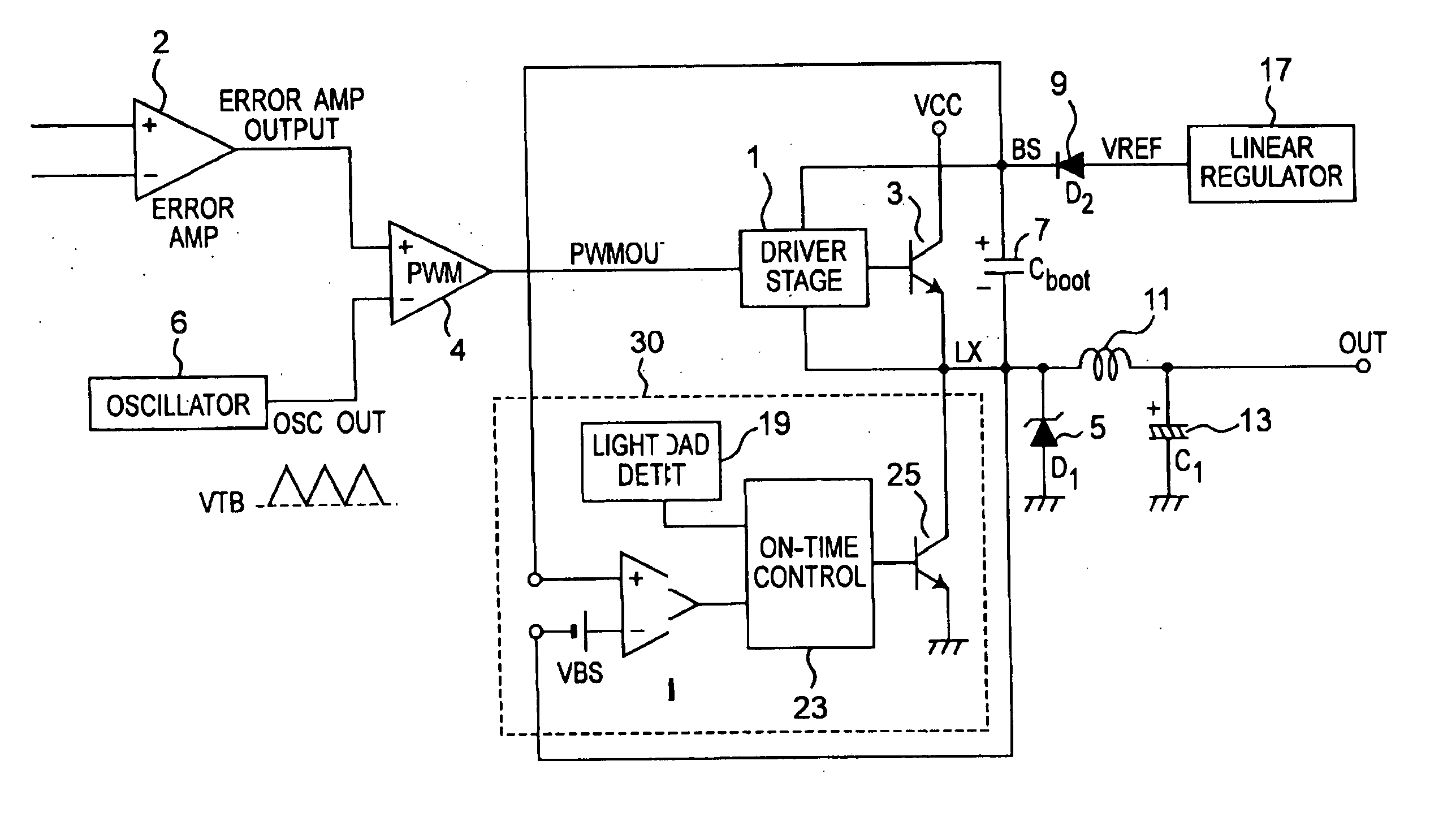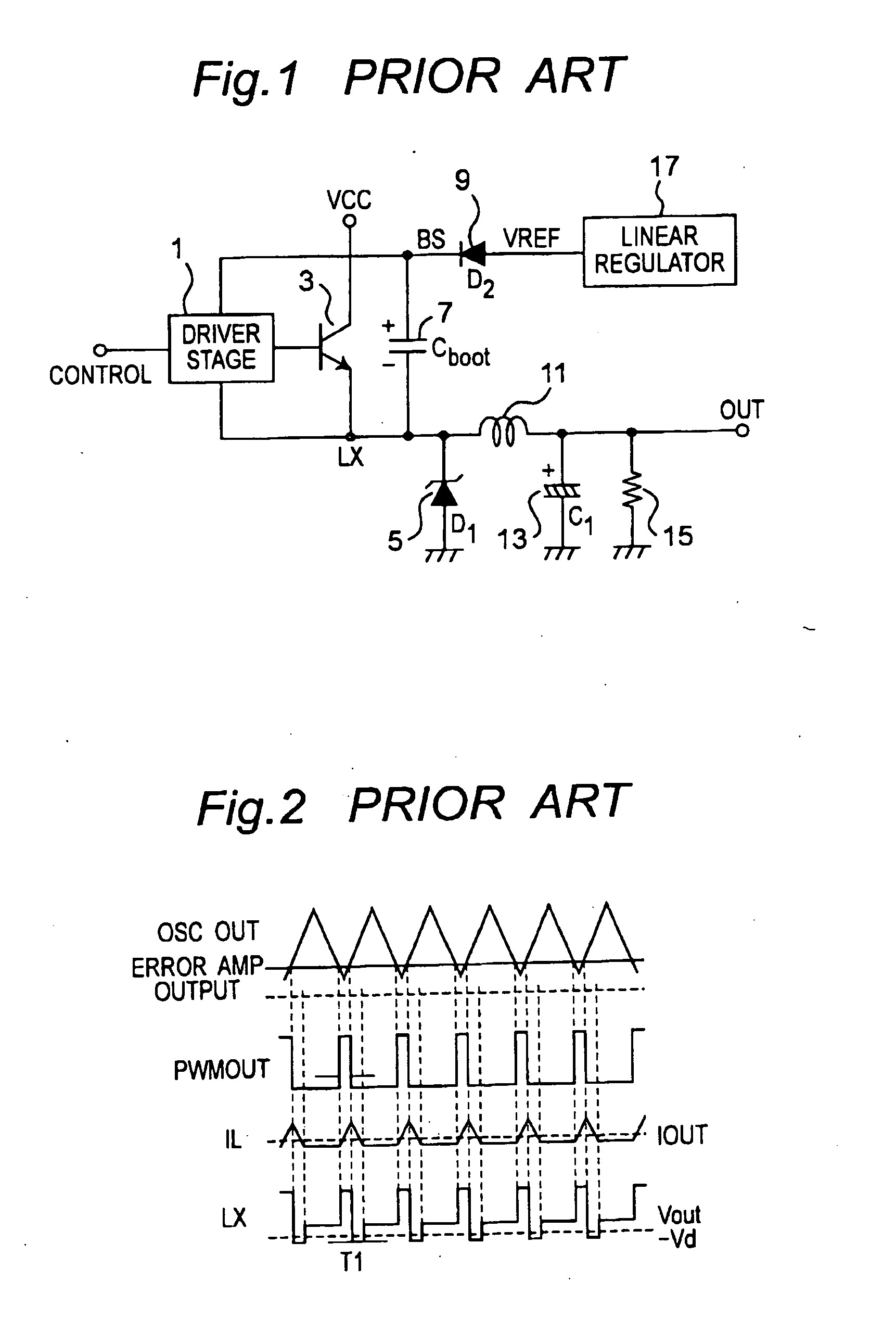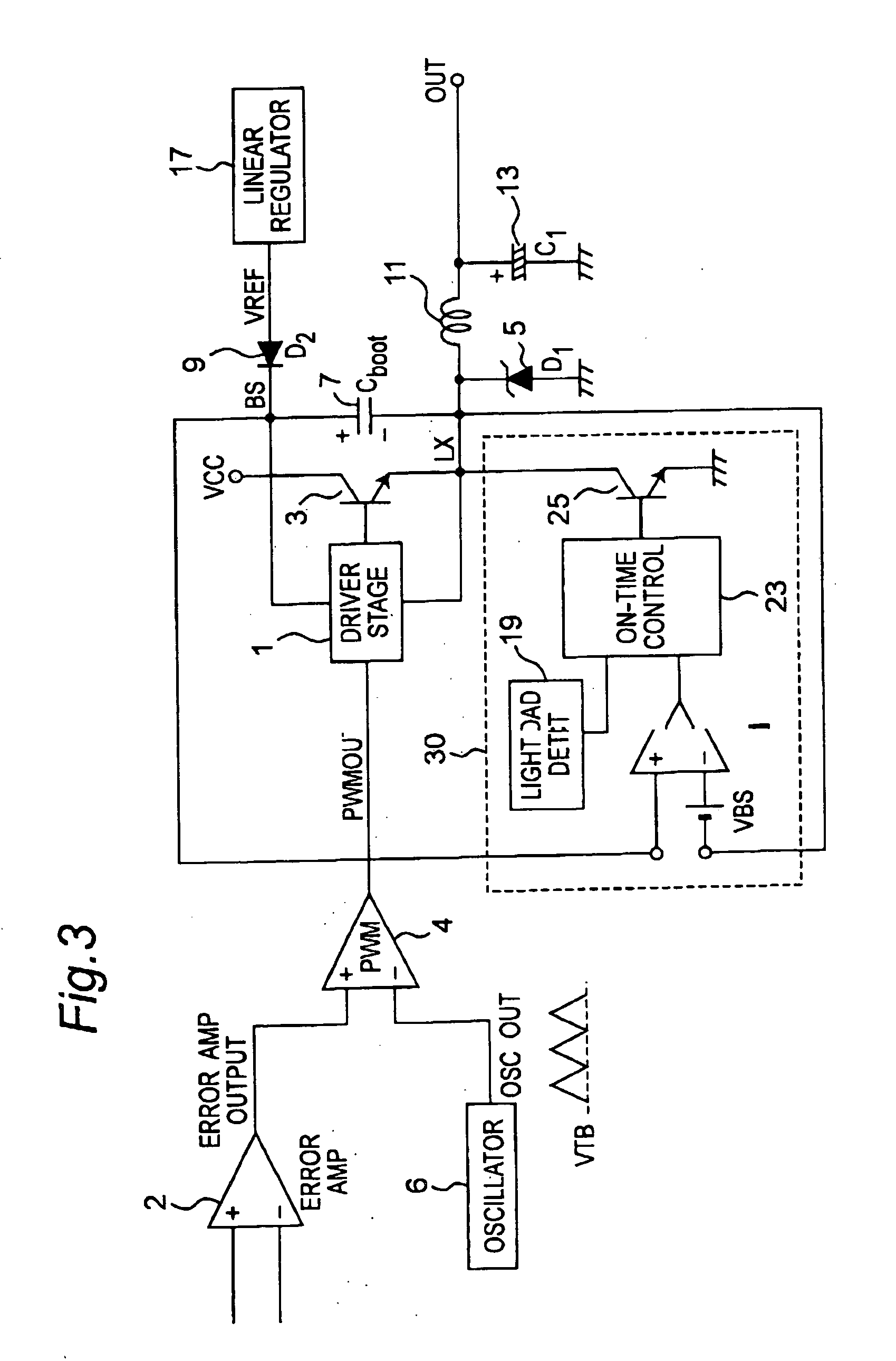Method and apparatus for controlling the charge of a bootstrap capacitor for non-synchronous type DC-DC converter
a dc-dc converter and bootstrap capacitor technology, applied in the direction of electric variable regulation, process and machine control, instruments, etc., can solve the problems of not being able to fully turn on the driver of the power transistor, the efficiency of the dc-dc converter is suffering, and the bootstrap capacitor may not be fully charged at light load or no load conditions
- Summary
- Abstract
- Description
- Claims
- Application Information
AI Technical Summary
Benefits of technology
Problems solved by technology
Method used
Image
Examples
first embodiment
[0045] Referring to FIG. 3, a first embodiment of a non-synchronous DC-DC converter according to the present invention is shown.
[0046] The DC-DC converter has an error amplifier 2, an oscillator 6, a pulse width modulation (PWM) circuit 4, a driver stage 1, a power transistor 3, a linear regulator 17, a diode 9, a bootstrap capacitor 7, a diode 5, an inductor 11, a capacitor 13, and a control circuit 30. The load control circuit 30 has a BS (bootstrap) voltage detector 21, a light load detector 19, an on-time control 23 and a secondary switch 25 formed by a transistor 25. The secondary switch 25 can be formed by a plurality of transistors.
[0047] Here a bipolar power transistor 3 is used, but can be any other type, such as a NMOS transistor or an N-type DMOS transistor. The bootstrap capacitor 7 is connected between the cathode of the diode 9 and a switching node LX. Here, LX is also used as a voltage level at the node LX. The voltage regulator 17 is connected to the anode of the d...
second embodiment
[0053] Referring to FIG. 6, a second embodiment of a non-synchronous DC-DC converter with maximum duty limit according to the present invention is shown.
[0054] The second embodiment shown in FIG. 6 differs from the first embodiment of FIG. 3 in that the second embodiment does not have a light load detector 19. The elements in FIG. 6 are numbered with the same reference number as that used in FIG. 3 and have the same function as that of FIG. 3. The on-time of the secondary transistor 25 is determined by the duration when the maximum voltage is higher than the ramping signal, or by using the same method as described in FIG. 5.
PUM
 Login to View More
Login to View More Abstract
Description
Claims
Application Information
 Login to View More
Login to View More - R&D
- Intellectual Property
- Life Sciences
- Materials
- Tech Scout
- Unparalleled Data Quality
- Higher Quality Content
- 60% Fewer Hallucinations
Browse by: Latest US Patents, China's latest patents, Technical Efficacy Thesaurus, Application Domain, Technology Topic, Popular Technical Reports.
© 2025 PatSnap. All rights reserved.Legal|Privacy policy|Modern Slavery Act Transparency Statement|Sitemap|About US| Contact US: help@patsnap.com



